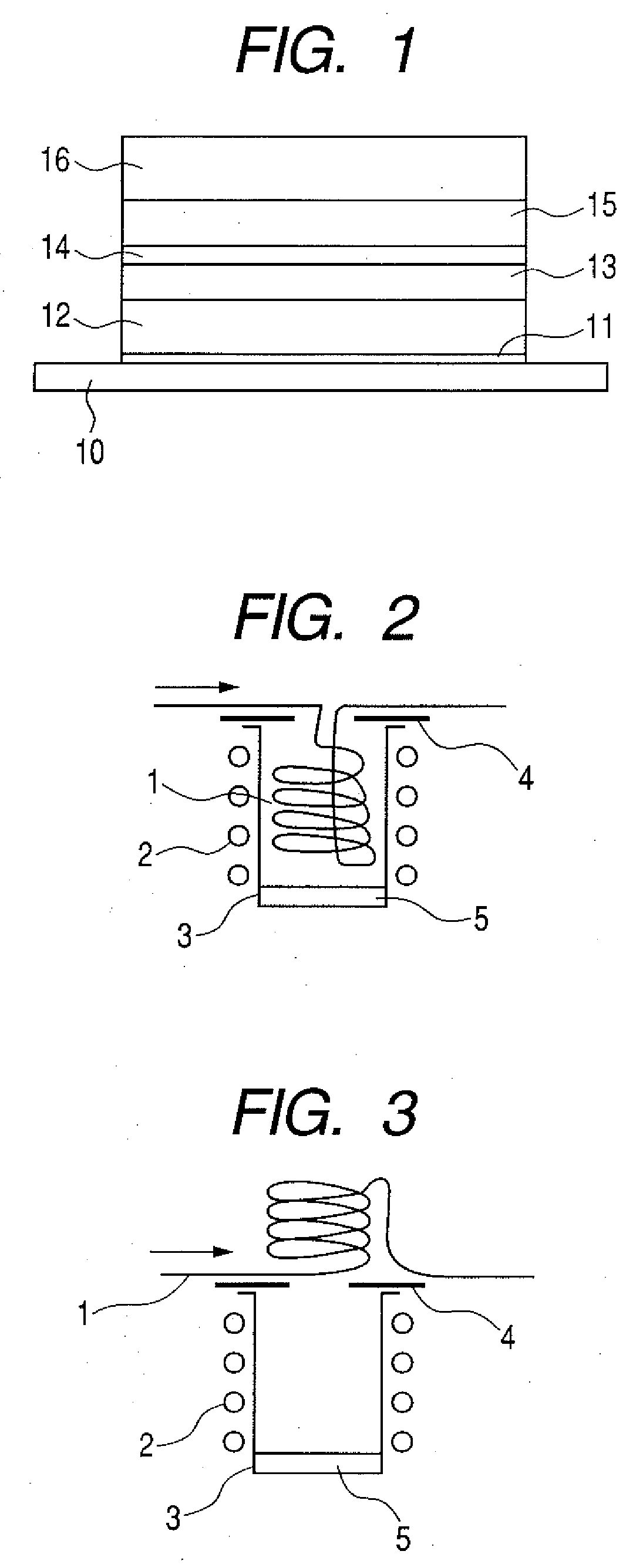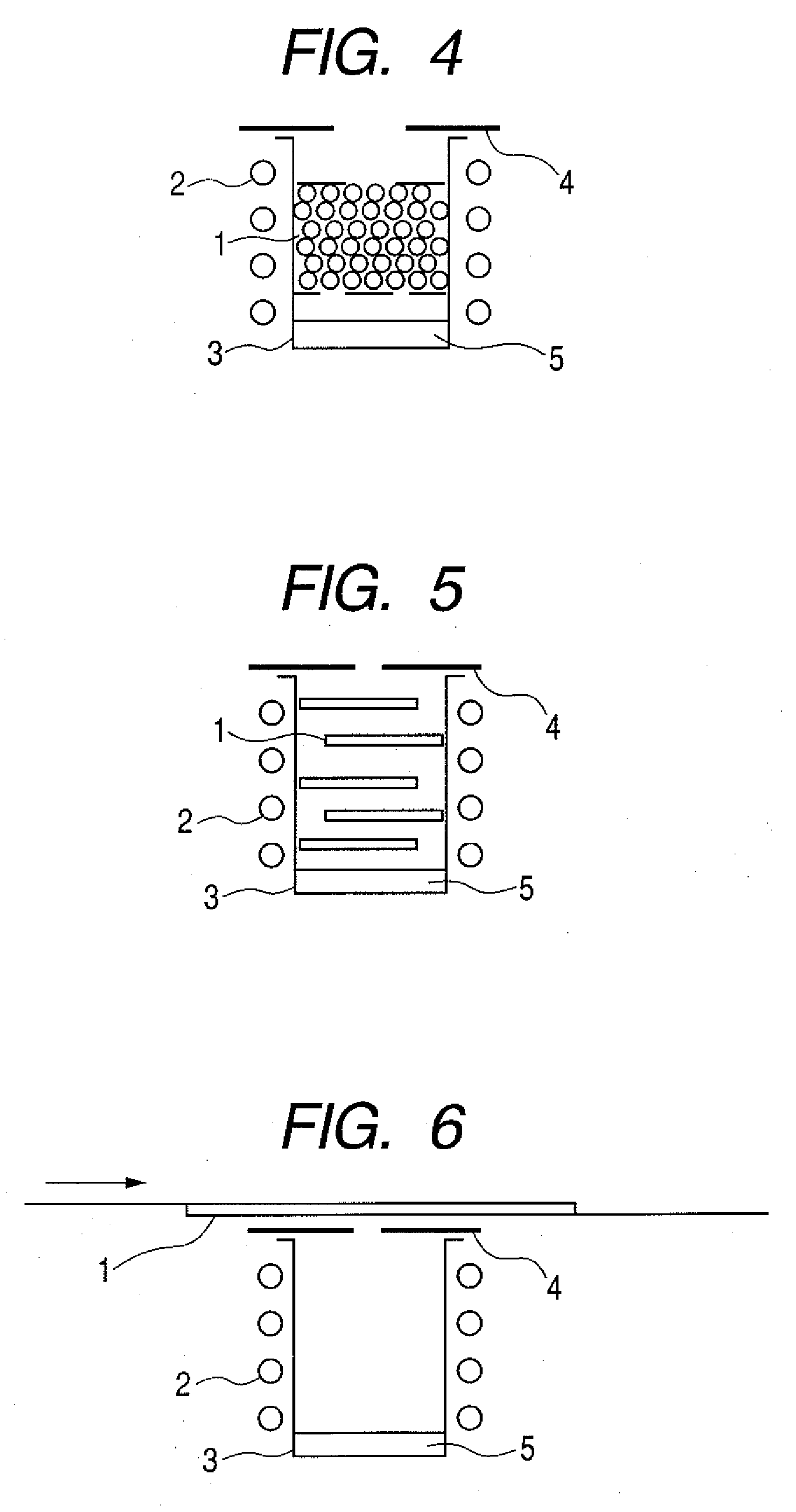Method of manufacturing organic light emitting device and vapor deposition system
a technology of light emitting devices and vapor deposition systems, which is applied in the direction of vacuum evaporation coatings, chemical vapor deposition coatings, coatings, etc., can solve the problems of insufficient function as donor dopants, increased drive voltage, and low drive voltage, and achieve low voltage and high electron injection efficiency
- Summary
- Abstract
- Description
- Claims
- Application Information
AI Technical Summary
Benefits of technology
Problems solved by technology
Method used
Image
Examples
example 1
[0043] A device illustrated in FIG. 1 was manufactured. In this example, chromium (Cr) which functions as a reflecting electrode was used as the anode 11 and indium tin oxide (ITO) which functions as a transparent electrode for taking out emitted light was used as the cathode 16 to manufacture a top emission type device.
[0044] A chromium (Cr) film was formed on the substrate 10 by sputtering in a thickness of 200 nm to obtain the anode 11. After that, the substrate was cleaned with UV / ozone.
[0045] Then, the cleaned substrate and the material were loaded on a vacuum vapor deposition system (manufactured by ULVAC KIKO, Inc.). After exhausting air such that the pressure inside becomes 1×10−6 Torr, an N, N′-α-dinaphthylbenzidine (α-NPD) film was formed on the anode 11 in a thickness of 60 nm to form the hole transport layer 12. Further, a co-deposited film of coumarin 6 (1.0 wt %) and tris (8-hydroxyquinolinato) aluminum (Alq3) was formed thereon in a thickness of 30 nm to form the li...
example 2
[0054] As a vapor depositing source of cesium carbonate, one illustrated in FIG. 3 was used. More specifically, a tungsten filament as the medium 1 was provided above the alumina crucible 3, and vapor deposition was carried out with the tungsten filament heated by energization.
[0055] A device was manufactured by a method similar to that of Example 1 except for the above, and evaluation was made. The result is shown in Table 1.
example 3
[0056] As a vapor depositing source of cesium carbonate, one illustrated in FIG. 4 was used. More specifically, spherical tungsten as the medium 1 was provided in the alumina crucible 3, and vapor deposition was carried out with the spherical tungsten indirectly heated by heat from the heat source 2. A thermocouple was attached to a bottom surface of the crucible 3 to measure the temperature, and the temperature was about 700° C.
[0057] A device was manufactured by a method similar to that of Example 1 except for the above, and evaluation was made. The result is shown in Table 1.
[0058] It is to be noted that, after vapor deposition of cesium carbonate was continuously carried out, the color of the spherical tungsten was changed to black, and the surface was covered with a residue. However, as shown in Table 1, although the initial value could not be maintained, it was confirmed that the characteristics could be continuously maintained.
PUM
| Property | Measurement | Unit |
|---|---|---|
| temperature | aaaaa | aaaaa |
| temperature | aaaaa | aaaaa |
| vaporizing temperature | aaaaa | aaaaa |
Abstract
Description
Claims
Application Information
 Login to View More
Login to View More - R&D
- Intellectual Property
- Life Sciences
- Materials
- Tech Scout
- Unparalleled Data Quality
- Higher Quality Content
- 60% Fewer Hallucinations
Browse by: Latest US Patents, China's latest patents, Technical Efficacy Thesaurus, Application Domain, Technology Topic, Popular Technical Reports.
© 2025 PatSnap. All rights reserved.Legal|Privacy policy|Modern Slavery Act Transparency Statement|Sitemap|About US| Contact US: help@patsnap.com



